Stop Paying High-Risk Merchant Fees
October 2, 2023
Were You Placed on the MATCH List Due to Excessive Chargebacks?
November 30, 2023High-Risk Merchant? Here’s How to Get Off MATCH
In the financial industry, there are many risks. One of the ways that payment processors and banks can mitigate their risks is by refusing to accept merchants that are high-risk. This can be problematic for the merchant to be able to conduct business, operate a merchant account, and much more. If you are a high-risk merchant and need more information, this blog is for you. Keep reading to learn more about high-risk merchants, frequently asked questions, and how to get early MATCH List removal to finally rid yourself of that high-risk status.
High-Risk Merchant FAQ: What is a High-Risk Merchant?
A payment processor may label a merchant account as high-risk if they’ve determined your business account is at higher risk for chargebacks, fraud, or a high volume of returns. The greater the risk, the harder it will be to find a traditional bank or payment processing service provider.
A merchant can be considered high-risk if:
- There is a high transaction volume: Merchants may be considered high-risk if they have a high volume of transactions or have a high average transaction rate. If a merchant processes over $20,000 in payments per month or has an average transaction of $500 or more, they may be classified as high-risk.
- Accepting international payments: If a merchant sells to customers internationally in countries that are listed as high risk of fraud, they may be considered high-risk (any country except the U.S., Canada, Japan, Australia, or the countries in Europe).
- New merchant: If a merchant has never processed payments before or only has a minimal history of processing transactions, they may be considered high-risk simply because they don’t have a track record.
- High-risk industry: While a merchant may have a spotless record, they may be labeled high-risk because the industry they are working in is considered to be at a higher risk of fraud, returns, or chargebacks. For example, subscription-based companies are labeled high-risk because many people sign up for a trial and forget to cancel their payments. When they look over their statements and see the forgotten charges, they often charge back the payment.
- Low credit score: If the merchant has a low credit score, they may be deemed high-risk.
- Are on the MATCH List: Businesses listed on the MATCH List are considered high-risk for breaking one of the 13 reason codes set forth by Mastercard.
Can a High-Risk Merchant Still Accept Credit Cards?
In some cases, a high-risk merchant can still operate a merchant account and accept credit cards. This is only if the merchant is able to find a processor who is willing to work with high-risk merchants. In most cases, high-risk merchants have to pay much higher fees than low-risk merchants, and this can very quickly eat into your bottom line. In addition, high-risk merchants are often locked into lengthy contracts that are tough to get out of once circumstances change.
What Industries Are Considered High Risk?
Many industries are considered high-risk due to the higher risk of fraud, chargebacks, or returns. All of these things mean more work for the bank and payment processor, and they would much rather work with low-risk merchants to avoid the hassle.
Sometimes, you cannot change the fact that you are a high-risk merchant, as many industries are inherently high-risk. Some of the industries considered by payment processors and banks to be high-risk include:
- Adult industry
- Debt collection
- E-cigarette, cannabidiol (CBD) and vape shops
- E-commerce
- Furniture and electronic stores
- Gambling
- Multilevel marketing
- Online dating
- Subscription services and companies with recurring payment plans
- Travel, such as airlines, cruises, and vacation planners
If your business does not fall into any of the above industries, there is a chance you are a high-risk merchant because your business is on the MATCH List. Luckily, there are ways you can get removed from the MATCH List without having to wait five years, pay high fees, or get stuck in a lengthy contract with a high-risk processor.
What is the MATCH List?
MATCH stands for Member Alert to Control High-Risk Merchants and is a merchant blacklist previously known as the Terminated Merchant File (TMF). According to BankCardUSA, MasterCard created it, and it’s a central resource for acquiring banks, also known as merchant service providers, to flag businesses who have had merchant accounts closed for a variety of reasons, including excessive chargebacks, excessive fraud, PCI non-compliance, closing an account with a negative balance, illegal activity, or otherwise violating credit card processing agreements. Acquirers must be certified with MasterCard’s MATCH program before they can access the database to make risk-based decisions about boarding a new merchant or adding a merchant to it for one of thirteen reason codes.
The MATCH List is very comprehensive and contains a wealth of information about you, your business, and much more. This was done by design so you cannot open a new business under a different name or find another loophole. The information on the MATCH List includes:
- Business Legal Name and DBA
- Business Address
- Business Phone Number
- Business Tax ID
- Business URL
- Principal Owner Name
- Principal Owner Address
- Principal Owner Phone Number
- Principal Owner Tax ID
- Account Opening Date and Termination Date
- MATCH Reason Code
What is the Five-Year Waiting Period?
In order to get off the MATCH List, you need to wait a period of five years. At this time, your name and all of the above information will age out of the MATCH List, and you can go back to resuming business as a low-risk merchant. However, this waiting period can be very difficult for most businesses who face it.
When you do not have a merchant account, you cannot accept credit cards or debit cards. This leaves you with very few options to operate your business. Your options include:
- Accept cash and checks only, which very few people carry around these days
- Find a high-risk processor to accept you, but pay high fees and get stuck in a lengthy contract
- Seek early removal from the MATCH List so that you can go back to business as usual quicker than five years
Can I Get Early Removal from the MATCH List?
Yes! You can seek early removal from the MATCH List so that you can no longer be considered a high-risk merchant and go back to business as usual. Your options include:
- Talk to your processor or bank. Call your payment processor or your bank to find out why you were put on the MATCH List. If it is something clerical or easy enough to prove, such as an incorrect chargeback rate or that your data security compliance is now up-to-date, they may consider removing you.
- Get professional legal help. Some law firms, such as TFM Law, specialize in merchant law and can help you get removed from the MATCH List.
Early MATCH List Removal with TFM Law
If you have found yourself on the Match List, we can help you. The Law Offices of Theodore Monroe focuses on litigation and counseling in the areas of payments, credit card processing, e-commerce, direct response marketing, and Federal Trade Commission enforcement. Last year, the firm got 100% of the people who came to us off the MATCH list.
Theodore F. Monroe, Founder of TFM Law, has successfully:
- Represented merchants recovering funds from processors
- Structured processing relationships to comply with Card Brand requirements
- Drafted and negotiated contracts involving payment facilitators and ISOs
- Represented continuity merchants in compliance and litigation issues
- Fought for numerous companies in suits brought by the Federal Trade Commission and obtained excellent results for firms in the digital products, loan modification, government grant, and nutraceuticals industries
Before opening his firm, Mr. Monroe practiced law with Crosby, Heafey, Roach & May (now Reed Smith LLP) and Lewis, D’Amato, Brisbois & Bisgaard (now Lewis, Brisbois, Bisgaard & Smith), where he defended numerous accounting and law firms in professional liability actions, and insurance carriers in bad faith actions.
Before becoming a lawyer, Mr. Monroe worked as a forensic accountant at Coopers & Lybrand, which provided him with a background in forensic accounting and financial analysis that is unique among litigators in Los Angeles. Mr. Monroe studied at Duke University Law School, achieved a BS with Honors, Accounting, the University of Kentucky, and is a member of the California State Bar and the Kentucky State Bar.
For more information on the MATCH List and removal, visit us at howtogetoffmatch.com.




